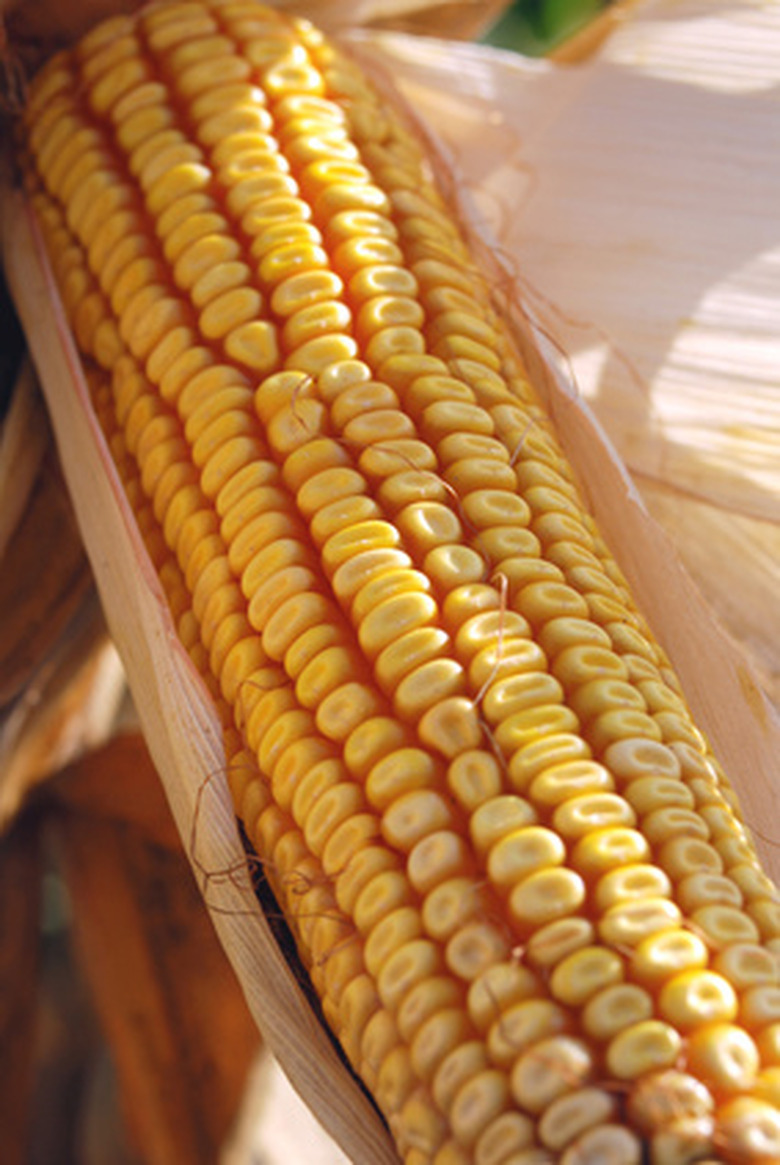How To Dry Corn On The Cob For The Next Year's Seeds
Things Needed
- String
- Paper bag
- Glass jar
If you would like to save some of your corn crop for next year's seed, it can be done with little effort, as long as you have planted a non-hybrid seed. Hybrid seeds have been engineered in such a manner that if you harvest seeds from them, they will not produce a true crop, or one that resembles the seeds' parent crop. If you don't know if you planted hybrid or non-hybrid corn seeds, you can still try saving a few of the seeds to see how a small crop turns out. But along with those seeds, purchase some non-hybrid seeds, and then dry the corn for next year's garden.
Step 1
Leave a few choice ears on the corn stalk after the others have been picked for eating.
Step 2
Twist the cobs off the stalk before the first hard frost, or when you must pull the stalks from the ground.
Step 3
Pull the husks back and away from the ear of corn, but do not pull them completely off. Tie them so they stay back. Use extra string so you can hang the husks.
- If you would like to save some of your corn crop for next year's seed, it can be done with little effort, as long as you have planted a non-hybrid seed.
- If you don't know if you planted hybrid or non-hybrid corn seeds, you can still try saving a few of the seeds to see how a small crop turns out.
Step 4
Hang the ears of corn in a cool, dry and airy location. Hanging them to dry is the best option, as it keeps them away from rodents and squirrels. Let the corn hang to dry for about two months.
Step 5
Inspect the corn for dryness. To do this, remove a kernel and hit it with a hammer. A dry piece of corn seed will shatter, while one that is not dry enough may only crack and crush. If the corn is now dry, move on to Step 6, otherwise, let it hang to dry for another 30 days and then test it for dryness once again.
- Hang the ears of corn in a cool, dry and airy location.
- If the corn is now dry, move on to Step 6, otherwise, let it hang to dry for another 30 days and then test it for dryness once again.
Step 6
Pull the husks completely off the cob and discard them, or add them to your mulch pile.
Step 7
Grasp the ear of corn in your hands, and twist over an open paper bag. The kernels should easily pop off the cob, and catching them in a bag will prevent them from dispersing all over the place.
Step 8
Separate the corn seeds from any debris, and transfer them to a glass or metal container. Store in a cool, dark spot until you need to plant them.
Tip
If you store your corn seed in a plastic container, you run the risk of rodents chewing through the container to get to the seed.
Warning
If there is any question as to whether all of your corn seeds are dry or not, allow them to continue to dry. Storing any seeds that still have moisture will cause mold in the container and damage the rest of the seeds.
